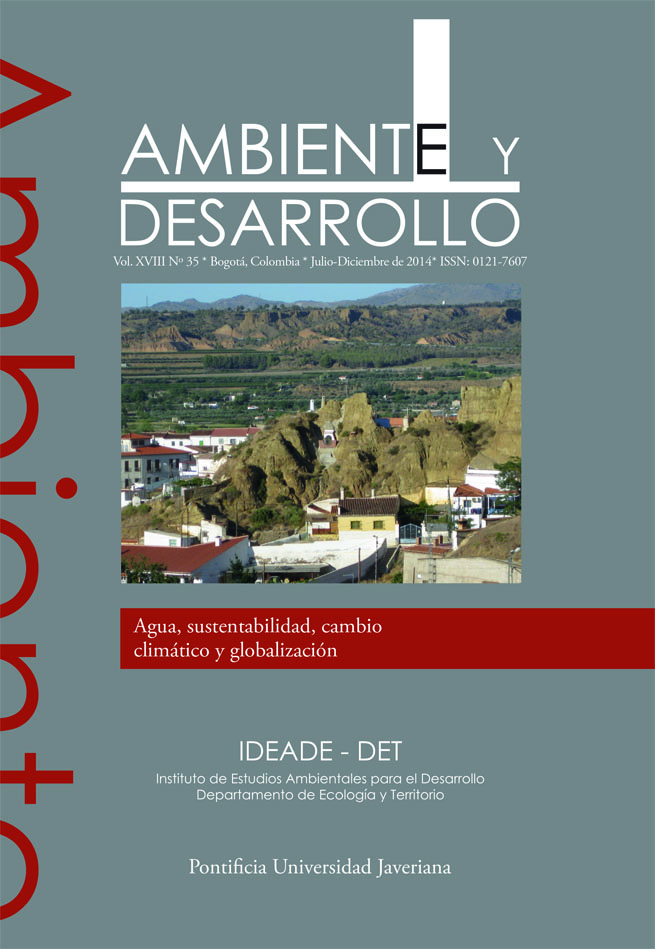Abstract
El objetivo de este artículo es hacer algunas recomendaciones sobre las vías que espreciso explorar en el fortalecimiento de estudios sobre análisis de ciclo de vida (acv)en agricultura. Metodológicamente, se consideró la identificación en la literatura delas principales barreras específicas al acv agrícola y su contraste con la experienciade los autores en el desarrollo de un estudio de la “finca al mercado”, sobre cadenasagrícolas del municipio de Viotá. Se identificaron dos particularidades sobre elacv agrícola: i) dificultades sobre ausencia de datos y ii) limitaciones derivadasde la variedad de contextos en cuanto a escala, técnica y límites del sistema deproducción. Las recomendaciones fueron pensadas desde el marco institucionalcolombiano y para contextos de producción informal y débil aplicación de criteriostécnico-administrativos.
Ambiente y Desarrollo is registered under a Creative Commons Attribution 4.0 International Public License. Thus, this work may be reproduced, distributed, and publicly shared in digital format, as long as the names of the authors and Pontificia Universidad Javeriana are acknowledged. Others are allowed to quote, adapt, transform, auto-archive, republish, and create based on this material, for any purpose (even commercial ones), provided the authorship is duly acknowledged, a link to the original work is provided, and it is specified if changes have been made. Pontificia Universidad Javeriana does not hold the rights of published works and the authors are solely responsible for the contents of their works; they keep the moral, intellectual, privacy, and publicity rights.
Approving the intervention of the work (review, copy-editing, translation, layout) and the following outreach, are granted through an use license and not through an assignment of rights. This means the journal and Pontificia Universidad Javeriana cannot be held responsible for any ethical malpractice by the authors. As a consequence of the protection granted by the use license, the journal is not required to publish recantations or modify information already published, unless the errata stems from the editorial management process. Publishing contents in this journal does not generate royalties for contributors.


